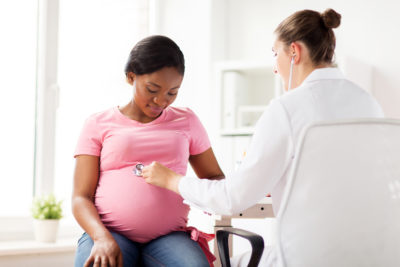 In the United States, it’s called a shot. In the United Kingdom, it’s called a jab. In either place, when it is flu season and you are pregnant, it’s called a good idea. The Centers for Disease Control and the American Congress of Obstetricians and Gynecologists agree on this point.
In the United States, it’s called a shot. In the United Kingdom, it’s called a jab. In either place, when it is flu season and you are pregnant, it’s called a good idea. The Centers for Disease Control and the American Congress of Obstetricians and Gynecologists agree on this point.
What are we talking about? The influenza vaccine, of course. If you are pregnant during flu season, which typically runs from October through May in the Northern hemisphere, you should give serious thought to being vaccinated. This season’s supply of vaccine is now widely available across the US.
Vaccination trends among pregnant women
Prior to 2009, the CDC estimates that approximately 15 percent of pregnant women in the United States were vaccinated as part of their prenatal and post-partum care. This number jumped to between 45 percent and 50 percent of pregnant women during the 2010-11 and 2011-12 flu seasons. This means we all have some work to do.
Time for more biology: A bit about the flu
As you may know, influenza, aka “the flu” is a highly contagious disease of the respiratory tract caused by a member of the Orthomyxoviridae family of RNA viruses. It is transmitted through the air as an aerosol when infected individuals cough or sneeze. It is most common in children, and typically presents with fever, chills, fatigue, sore throat, headache, coughing, and muscle pain. Medical types call this last symptom myalgia, which is very different from myopia, the synonym for nearsightedness. Both, however, are more fun to say than they are to have.
Be vaccinated for your own health
Certain groups are more prone to experience severe complications related to an influenza virus infection. Pregnant women are among them. Other high-risk groups include individuals with heart, lung or kidney disease and everyone over the age of 65.
Public health officials remind us that being vaccinated during pregnancy:
- Reduces the chance that you will get the flu.
- Results in fewer visits to medical care providers.
- Prevents around 1 – 2 fewer hospitalizations per 1,000 women vaccinated.
- Reduces your risk of miscarriage and preterm delivery related to influenza.
- Reduces your risk of death from influenza.
Be vaccinated for your baby’s health too
Young children are also more susceptible to severe illness. Due to the relative immaturity of their immune system, infants cannot be effectively vaccinated prior to 6 months of age. So caregivers need to be vaccinated on behalf of the babies. Some call this “creating a halo” around the baby.
General guidelines
As always, you should consult with your personal healthcare team prior to being vaccinated in order to make sure you do not have any contraindications, such as an allergy to eggs. Also remember that:
- You should get the inactivated flu vaccine, NOT the nasal spray which is derived from live attenuated virus.
- You can get the vaccine in any trimester of your pregnancy.
- You can also get the vaccine post-partum if you missed getting it during your pregnancy.
- You can get the vaccine if you are breastfeeding.
Get more information
- CDC Fact Sheet
- ACOG FAQ for Patients
- In your spare time, you can watch the excellent PBS documentary about the 1918 Flu Epidemic (52 minutes) at pbs.org/wgbh/americanexperience/films/influenza/
Other sources for this blog:
- cdc.gov/mmwr/preview/mmwrhtml/mm6138a2.htm
- cdc.gov/mmwr/preview/mmwrhtml/mm6032a2.htm
- cdc.gov/MMWr/preview/mmwrhtml/rr5103a1.htm
- co.mendocino.ca.us/hhsa/pdf/chs_h1n1_pregnant.pdf
- wwwnc.cdc.gov/eid/article/14/1/07-0667_article.htm#effectsofinfluenzaonpregnantwomen
Blog post written by Sonya Erickson, MD, December 11, 2012. While this information was derived from reliable medical sources, it is not intended as a substitute for your personal medical care. Readers are directed to consult with their personal health care team members when addressing their individual healthcare needs. This is particularly true when making decisions about vaccination. At the University of Colorado Hospital, employees take part in a highly coordinated influenza vaccination program designed to protect ourselves and our patients.
